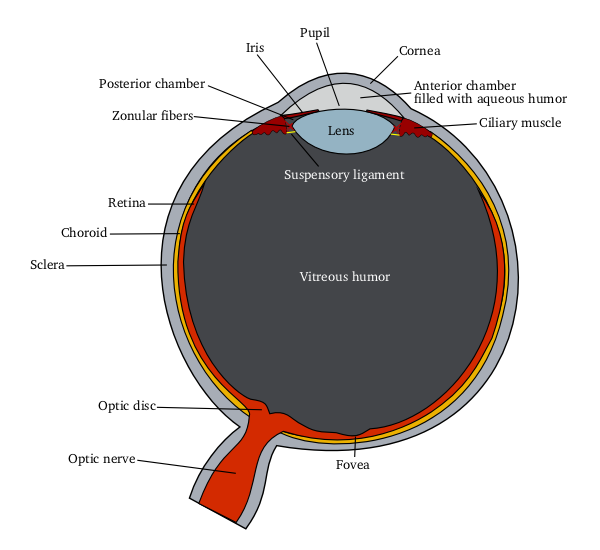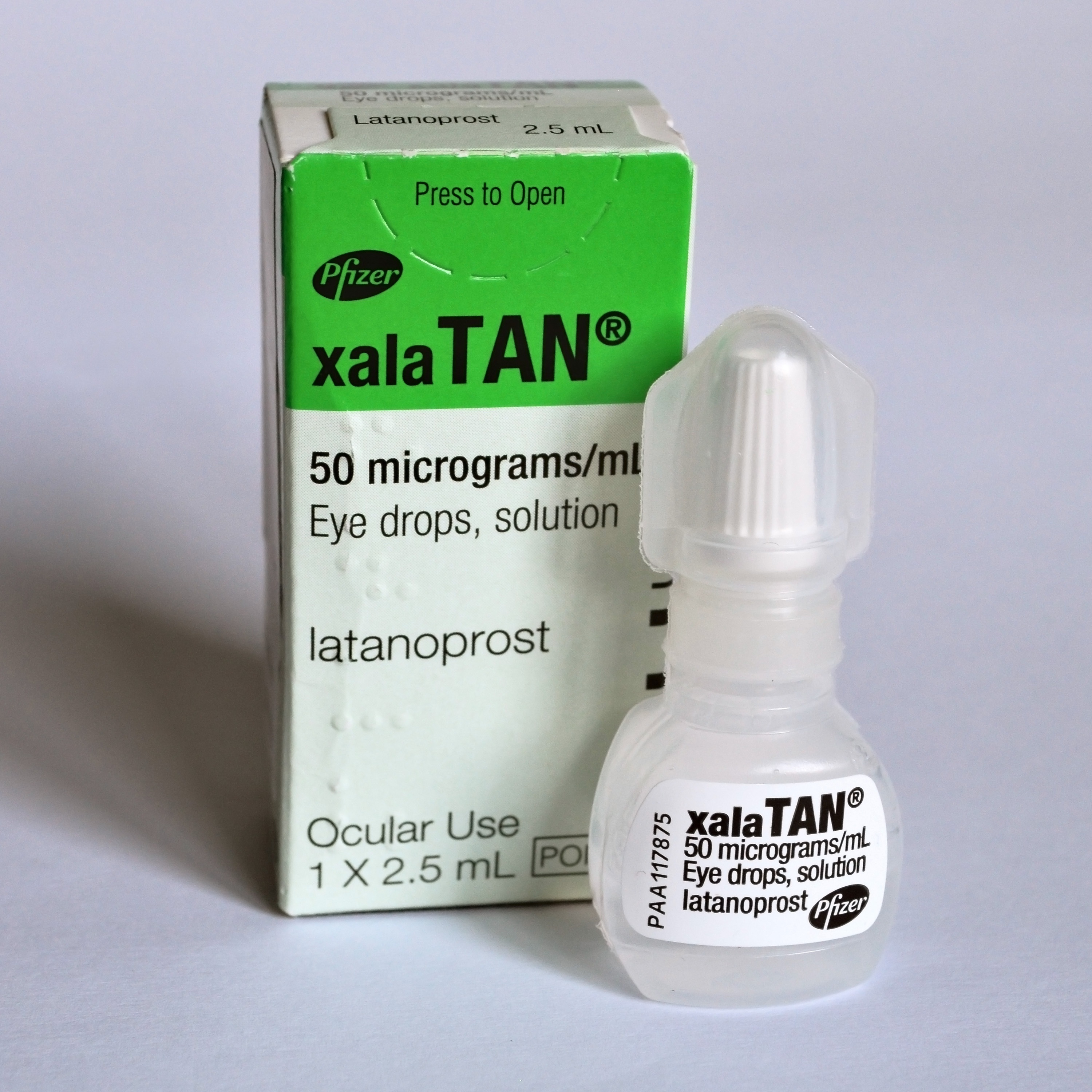|
Ophthalmic Drug Administration
Ophthalmic drug administration is the administration of a drug to the eyes, most typically as an eye drop formulation. Topical formulations are used to combat a multitude of diseased states of the eye. These states may include bacterial infections, eye injury, glaucoma, and dry eye. However, there are many challenges associated with topical delivery of drugs to the cornea of the eye. Eye drop formulations Two of the largest challenges faced when using topicals to treat pathological states of the eye include Adherence (medicine), patient compliance and ineffective absorbance of drugs into the cornea due to short contact times, solution drainage, tears turnover, and dilution or lacrimation. In fact, researchers in this field of drug delivery agree that less than 7% of drugs delivered to the eye reach and penetrate the corneal barrier, therefore, increasing the frequency of dosing used for topicals. This is one of the fundamental problem associated with using topicals to deliver dr ... [...More Info...] [...Related Items...] OR: [Wikipedia] [Google] [Baidu] |
Schematic Diagram Of The Human Eye
A schematic, or schematic diagram, is a designed representation of the elements of a system using abstract, graphic symbols rather than realistic pictures. A schematic usually omits all details that are not relevant to the key information the schematic is intended to convey, and may include oversimplified elements in order to make this essential meaning easier to grasp, as well as additional organization of the information. For example, a subway map intended for passengers may represent a subway station with a dot. The dot is not intended to resemble the actual station at all but aims to give the viewer information without unnecessary visual clutter. A schematic diagram of a chemical process uses symbols in place of detailed representations of the vessels, piping, valves, pumps, and other equipment that compose the system, thus emphasizing the functions of the individual elements and the interconnections among them and suppresses their physical details. In an electronic circuit d ... [...More Info...] [...Related Items...] OR: [Wikipedia] [Google] [Baidu] |
Ketotifen
Ketotifen is an antihistamine medication and a mast cell stabilizer used to treat allergic conditions such as conjunctivitis, asthma, and urticaria (hives). Ketotifen is available in ophthalmic (eye drops or drug-eluting contact lenses) and oral (tablets or syrup) forms: the ophthalmic form relieves eye itchiness and irritation associated with seasonal allergies, while the oral form helps prevent systemic conditions such as asthma attacks and allergic reactions. In addition to treating allergies, ketotifen has shown efficacy in managing systemic mast cell diseases such as mastocytosis and mast cell activation syndrome (MCAS), which involve abnormal accumulation or activation of mast cells throughout the body. Ketotifen is also used for other allergic-type conditions like atopic dermatitis (eczema) and food allergies. Ketotifen acts by blocking the H1 histamine receptors, which are found on various cells in the body, such as smooth muscle, endothelium, and nerve cells. Thi ... [...More Info...] [...Related Items...] OR: [Wikipedia] [Google] [Baidu] |
Norfloxacin
Norfloxacin, sold under the brand name Noroxin among others, is an antibiotic An antibiotic is a type of antimicrobial substance active against bacteria. It is the most important type of antibacterial agent for fighting pathogenic bacteria, bacterial infections, and antibiotic medications are widely used in the therapy ... that belongs to the class of fluoroquinolone antibiotics. It is used to treat urinary tract infections, gynecological infections, inflammation of the prostate gland, gonorrhea and bladder infection. Eye drops were approved for use in children older than one year of age. Norfloxacin is associated with a number of rare serious adverse reactions as well as spontaneous tendon ruptures and irreversible peripheral neuropathy. Tendon problems may manifest long after therapy had been completed and in severe cases may result in lifelong disabilities. It was patented in 1977 and approved for medical use in 1983. Medical uses The initial approval by the Food ... [...More Info...] [...Related Items...] OR: [Wikipedia] [Google] [Baidu] |
Timolol Structure
Timolol is a beta blocker medication used either by mouth or as eye drops. As eye drops it is used to treat increased pressure inside the eye such as in ocular hypertension and glaucoma. By mouth it is used for high blood pressure, chest pain due to insufficient blood flow to the heart, to prevent further complications after a heart attack, and to prevent migraines. Common side effects with the drops is irritation of the eye. Common side effects by mouth include tiredness, slow heart beat, itchiness, and shortness of breath. Other side effects include masking the symptoms of low blood sugar in those with diabetes. Use is not recommended in those with asthma, uncompensated heart failure, or chronic obstructive pulmonary disease (COPD). It is unclear if use during pregnancy is safe for the fetus. Timolol is a non-selective beta blocker. Timolol was patented in 1968, and came into medical use in 1978. It is on the World Health Organization's List of Essential Medicines. Tim ... [...More Info...] [...Related Items...] OR: [Wikipedia] [Google] [Baidu] |
Timolol
Timolol is a beta blocker medication used either by mouth or as eye drops. As eye drops it is used to treat increased pressure inside the eye such as in ocular hypertension and glaucoma. By mouth it is used for high blood pressure, chest pain due to insufficient blood flow to the heart, to prevent further complications after a heart attack, and to prevent migraines. Common side effects with the drops is irritation of the eye. Common side effects by mouth include tiredness, slow heart beat, itchiness, and shortness of breath. Other side effects include masking the symptoms of low blood sugar in those with diabetes. Use is not recommended in those with asthma, uncompensated heart failure, or chronic obstructive pulmonary disease (COPD). It is unclear if use during pregnancy is safe for the fetus. Timolol is a non-selective beta blocker. Timolol was patented in 1968, and came into medical use in 1978. It is on the World Health Organization's List of Essential Medicine ... [...More Info...] [...Related Items...] OR: [Wikipedia] [Google] [Baidu] |
Dry Eye Syndrome
Dry eye syndrome, also known as keratoconjunctivitis sicca, is the condition of having dry eyes. Symptoms include dryness in the eye, irritation, redness, discharge, blurred vision, and easily fatigued eyes. Symptoms range from mild and occasional to severe and continuous. Dry eye syndrome can lead to blurred vision, instability of the tear film, increased risk of damage to the ocular surface such as scarring of the cornea, and changes in the eye including the neurosensory system. Dry eye occurs when either the eye does not produce enough tears or when the tears evaporate too quickly. This can be caused by age, contact lens use, meibomian gland dysfunction, pregnancy, Sjögren syndrome, vitamin A deficiency, omega-3 fatty acid deficiency, LASIK surgery, and certain medications such as antihistamines, some blood pressure medication, hormone replacement therapy, and antidepressants. Chronic conjunctivitis such as from tobacco smoke exposure or infection may also lead to the ... [...More Info...] [...Related Items...] OR: [Wikipedia] [Google] [Baidu] |
Depiction Of A Person Suffering From Dry Eye Syndrome
Depiction is reference conveyed through pictures. A picture refers to its object through a non-linguistic two-dimensional scheme, and is distinct from writing or notation. A depictive two-dimensional scheme is called a picture plane and may be constructed according to descriptive geometry, where they are usually divided between ''projections'' (orthogonal and various oblique angles) and ''perspectives'' (according to number of vanishing points). Pictures are made with various materials and techniques, such as painting, drawing, or prints (including photography and movies) mosaics, tapestries, stained glass, and collages of unusual and disparate elements. Occasionally, picture-like features may be recognised in simple inkblots, accidental stains, peculiar clouds or a glimpse of the moon, but these are special cases, and it is controversial whether they count as genuine instances of depiction. Similarly, sculpture and theatrical performances are sometimes said to depict, but this req ... [...More Info...] [...Related Items...] OR: [Wikipedia] [Google] [Baidu] |
Latanoprost
Latanoprost, sold under the brand name Xalatan among others, is a medication used to treat increased pressure inside the eye (intraocular pressure). This includes ocular hypertension and open-angle glaucoma. Latanaprost is applied as eye drops to the eyes. Onset of effects is usually within four hours, and they last for up to a day. Common side effects include blurry vision, redness of the eye, itchiness, and darkening of the iris. Latanoprost is in the prostaglandin analogue family of medications. It works by increasing the outflow of aqueous fluid from the eyes through the uveoscleral tract. Latanoprost was approved for medical use in the United States and the European Union in 1996. It is on the World Health Organization's List of Essential Medicines. Latanoprost is available as a generic medication. In 2022, it was the 67th most commonly prescribed medication in the United States, with more than 9million prescriptions. It is available as a fixed-dose combinat ... [...More Info...] [...Related Items...] OR: [Wikipedia] [Google] [Baidu] |
Glaucoma
Glaucoma is a group of eye diseases that can lead to damage of the optic nerve. The optic nerve transmits visual information from the eye to the brain. Glaucoma may cause vision loss if left untreated. It has been called the "silent thief of sight" because the loss of vision usually occurs slowly over a long period of time. A major risk factor for glaucoma is increased pressure within the eye, known as Intraocular pressure, intraocular pressure (IOP). It is associated with old age, a family history of glaucoma, and certain medical conditions or the use of some medications. The word ''glaucoma'' comes from the Ancient Greek word (), meaning 'gleaming, blue-green, gray'. Of the different types of glaucoma, the most common are called open-angle glaucoma and closed-angle glaucoma. Inside the eye, a liquid called Aqueous humour, aqueous humor helps to maintain shape and provides nutrients. The aqueous humor normally drains through the trabecular meshwork. In open-angle glaucoma, ... [...More Info...] [...Related Items...] OR: [Wikipedia] [Google] [Baidu] |
Depiction Of Vision For A Glaucoma Patient
Depiction is reference conveyed through pictures. A picture refers to its object through a non-linguistic two-dimensional scheme, and is distinct from writing or notation. A depictive two-dimensional scheme is called a picture plane and may be constructed according to descriptive geometry, where they are usually divided between ''projections'' (orthogonal and various oblique angles) and ''perspectives'' (according to number of vanishing points). Pictures are made with various materials and techniques, such as painting, drawing, or prints (including photography and movies) mosaics, tapestries, stained glass, and collages of unusual and disparate elements. Occasionally, picture-like features may be recognised in simple inkblots, accidental stains, peculiar clouds or a glimpse of the moon, but these are special cases, and it is controversial whether they count as genuine instances of depiction. Similarly, sculpture and theatrical performances are sometimes said to depict, but this req ... [...More Info...] [...Related Items...] OR: [Wikipedia] [Google] [Baidu] |
Corneal Epithélium
The cornea is the transparent front part of the eyeball which covers the iris, pupil, and anterior chamber. Along with the anterior chamber and lens, the cornea refracts light, accounting for approximately two-thirds of the eye's total optical power. In humans, the refractive power of the cornea is approximately 43 dioptres. The cornea can be reshaped by surgical procedures such as LASIK. While the cornea contributes most of the eye's focusing power, its focus is fixed. Accommodation (the refocusing of light to better view near objects) is accomplished by changing the geometry of the lens. Medical terms related to the cornea often start with the prefix "'' kerat-''" from the Greek word κέρας, ''horn''. Structure The cornea has unmyelinated nerve endings sensitive to touch, temperature and chemicals; a touch of the cornea causes an involuntary reflex to close the eyelid. Because transparency is of prime importance, the healthy cornea does not have or need blood vessels ... [...More Info...] [...Related Items...] OR: [Wikipedia] [Google] [Baidu] |




